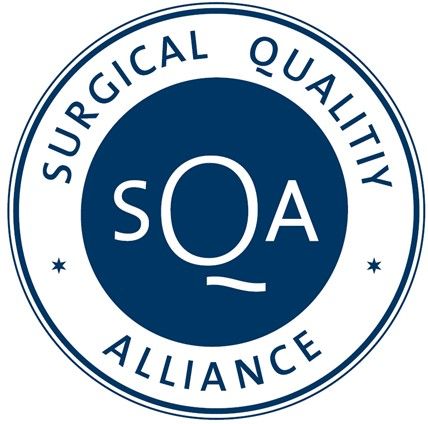Empty Nose Syndrom
Die Leere, die keine ist...
Der Begriff "Empty Nose Syndrome" (ENS) ist alt. Bereits in den 1980er Jahren berichten Ärzte von dem Gefühl einer leeren Nase, das nach Infekten oder Operationen auftrat. Bis heute wird vor allem der Eingriff an den unteren Nasenmuscheln und der Nasenscheidewand als eine der wichtigsten Ursachen für das teilweise massiv störende Gefühl der Nase, die so leer ist, dass sie nicht funktioniert.
Dabei wird dem praktischen HNO-Arzt schnell klar, dass der Zusammenhang zwischen dem Gefühl der "Empty Nose" und einer tatsächlichen Weite der Nase gar nicht so eindeutig ist. Sieht man nicht statt dessen viel mehr Patienten, die -aus welchen Gründen auch immer- noch viel mehr Platz in der Nase haben und/oder bei denen noch weniger innere Nasenstrukturen vorhanden sind und die trotzdem keinerlei Beschwerden angeben? Sind die Patienten mit einem ENS nicht in den meisten Fällen schon derart informiert und trainiert, dass sie den Zusammenhang zwischen "Leere" und den Symptomen als absolut sicher annehmen?
Als im Jahr 2014 Prof. Augustinus Bader mit seiner Idee der Regeneration der Nasenschleimhaut auf uns zukam, ahnten wir nicht, wie diese Möglichkeiten unseren Blick auf ENS verändern würden. Knapp 10 Jahre später würden wir am liebste den Begriff "Empty Nose Syndrome" in "Dysfunction Nose Syndrome" ändern. Denn für uns sprechen viele Indizien dafür, dass die anatomischen Strukturen innerhalb der Nase, wie Nasenmuscheln oder Nasenscheidewand nur zweitranging sind, wenn es um das Gefühl der Leere in der Nase geht. So haben wir bei allen Patienten mit einem "ENS" einen deutlich verschlechteren Mucosaoscore gefunden. Dieser beschreibt die Beschaffenheit und die Funktion der Nasenschleimhaut. Ist diese jedoch degeneriert, also auch in der Funktion eingeschränkt, können alle Symptome des "ENS" auch genau damit erklärt werden. Es ist dann (fast) egal, wie viel von der Nasenmuschel bei dem vergangenen Eingriff reseziert oder wie groß das Loch in der Nasenscheidewand ist. Umgekehrt gilt: bei sehr vielen "ENS"-Patienten, die wir mit regenerationsfördernden Medikamenten, wie einem Mix aus Epoetin und Bepanthen behandelt haben, hat sich nach 3-6 Monaten nicht nur der Mukosascore, sondern auch das Befinden der Patienten mit einem ehemaligen "ENS" deutlich verbessert. Vielen Patienten konnte auf diese Weise die traumatisierenden Eingriffe zum Einsetzen von Implantaten u.a. erspart werden.
The term "Empty Nose Syndrome" (ENS) is old. As early as the 1980s, doctors reported the feeling of an empty nose that occurred after infections or operations. To this day, surgery on the inferior turbinates and nasal septum in particular is considered one of the most important causes of the sometimes massively disturbing feeling of the nose being so empty that it does not function.
It quickly becomes clear to the practical ENT physician that the connection between the feeling of an "Empty Nose" and an actual widening of the nose is not at all clear. Don't you see instead many more patients who -for whatever reason- have much more space in the nose and/or in whom there are even fewer internal nasal structures and who nevertheless report no complaints at all? Aren't the patients with an ENS in most cases already so informed and trained that they assume the connection between "emptiness" and the symptoms as absolutely certain?
When Prof. Augustinus Bader approached us in 2014 with his idea of regenerating the nasal mucosa, we had no idea how these possibilities would change our view of ENS. Almost 10 years later we would like to change the term "Empty Nose Syndrome" to "Dysfunction Nose Syndrome". Because for us, there is a lot of evidence that the anatomical structures within the nose, such as turbinates or nasal septum, are only secondary when it comes to the feeling of emptiness in the nose. Thus, we found a significantly worsened mucosa score in all patients with an "ENS". This describes the condition and function of the nasal mucosa. However, if the mucosa is degenerated, i.e. if its function is also limited, all the symptoms of "ENS" can also be explained precisely by this. It then (almost) does not matter how much of the nasal concha was resected during the past surgery or how large the hole in the nasal septum is. The reverse is true: in very many "ENS" patients whom we treated with regeneration-promoting drugs, such as a mix of Epoetin and Bepanthen, not only the mucosal score but also the well-being of patients with a former "ENS" improved significantly after 3-6 months. In this way, many patients could be spared the traumatizing procedures for inserting implants, etc.









































